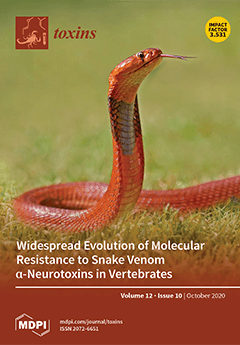Effects of folic acid and protein levels on growth and serum chemistry in pigs fed aflatoxin were determined in two experiments. Increasing aflatoxin (250 to 800 ppb) decreased (
P < 0.05) weight gain and feed intake for both of the 35-day trials. In Experiment 1, increasing aflatoxin (0, 250, 500 ppb), increased linearly (
P < 0.05) aspartate aminotransferase (AST), alkaline phosphatase (ALKP) and ɣ-glutamyl transferase (GGT). Folic acid (0, 2.0, 5.0, 12.5 ppm) increased linearly (
P < 0.05) serum K, Ca, P, Mg, and AST with the largest effect observed at 12.5 ppm. Folic acid decreased (
P < 0.05) blood urea nitrogen (BUN): creatinine and Na:K. In Experiment 2, aflatoxin (800 ppb) increased (
P < 0.05) glucose and GGT, and decreased (
P < 0.05) Na:K and albumin:globulin. Increasing protein from 15 to 18% elevated BUN: creatinine (
P < 0.05), albumin: globulin (
P < 0.05), albumin (
P < 0.05) and ALKP (
P < 0.05). Folic acid (2 ppm) elevated (
P < 0.05) BUN, and interacted with both aflatoxin (
P < 0.10) and protein (
P < 0.05) on BUN. Adding folic acid to aflatoxin contaminated diets improved some measures of clinical chemistry in Experiment 1 but not traditional growth performance measures. The higher protein level reduced the effects of aflatoxicosis on growth.
Full article






